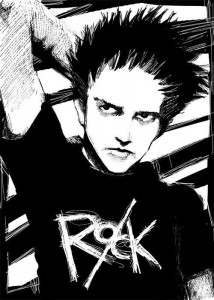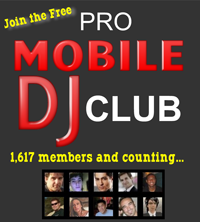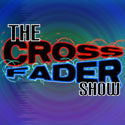by Dave Austin - “Music Professor”
 Punk rock, which came on the scene back in 1974 in the U.S, Britain and Australia, is deeply rooted in garage rock and other forms of what is now called protopunk music. Without getting overly academic, the punksters, determined to be aggressively modern, turned away from what they perceived as the excess of 1970s mainstream rock. Instead, they created fast, hard-edged music with typically short songs, stripped down instrumentation and often political anti-establishment lyrics. John Holmstrom, founding editor of Punk magazine said, “Punk rock had to come along because the rock scene had become so tame that Billy Joel and Simon & Garfunkel were being called rock & roll, when to me and other fans, rock and roll meant this wild and rebellious music.” According to Holmstrom, punk rock was “rock & roll by people who didn’t have very much skill as musicians but still felt the need to express themselves through music.” “No Elvis, Beatles or Rolling Stones in 1977” declared the Clash in their song, “1977.”
Punk rock, which came on the scene back in 1974 in the U.S, Britain and Australia, is deeply rooted in garage rock and other forms of what is now called protopunk music. Without getting overly academic, the punksters, determined to be aggressively modern, turned away from what they perceived as the excess of 1970s mainstream rock. Instead, they created fast, hard-edged music with typically short songs, stripped down instrumentation and often political anti-establishment lyrics. John Holmstrom, founding editor of Punk magazine said, “Punk rock had to come along because the rock scene had become so tame that Billy Joel and Simon & Garfunkel were being called rock & roll, when to me and other fans, rock and roll meant this wild and rebellious music.” According to Holmstrom, punk rock was “rock & roll by people who didn’t have very much skill as musicians but still felt the need to express themselves through music.” “No Elvis, Beatles or Rolling Stones in 1977” declared the Clash in their song, “1977.”
Historically, two1969 albums by Michigan-based bands are widely regarded as the central protopunk recordings. Detroit’s MC5 released “Kick out the Jams.” which one critic proclaimed as “intentionally crude and aggressively raw.” Later that year, The Stooges from Ann Arbor premiered with their self-titled album. Led by singer, Iggy Pop, they created the “sound of Chuck Berry’s Airmobile-after thieves stripped it for parts.”
In the 1970s, the New York Dolls updated the original wildness of 50s rock in a style which came to be known as glam punk Also during this period, the New York duo, Suicide, played sparse, experimental music with a confrontational stage act. There were such bands as Modern Lovers, The Dictators, The Real Kids and Death, made up of three black brothers. In Ohio, influential bands were also emerging, led by Devo, The Electric Eels and Rocket from the Tombs.
By late 1976, bands such as New York’s Ramones , The Sex Pistols and the Clash in London were leading the charge of this new musical movement. As it began to spread worldwide, it became a major cultural phenomenon in the U.K., with a rebellious punk subculture and a distinctive style of clothing and adornment. The classic punk rock look among males was a t-shirt, jeans and motorcycle jacket – a throwback to the 1950s greasers.
Not to be left out, the California punk scene was in full swing by 1977 with L.A.-based bands, The Weirdoes, Black Randy and the Metrosquad and a host of others. To the north, in Portland, there were The Wipers, and from across the border in Canada, the all-girl group, Dee Dee and the Dishrags.
In the 1980s, an even faster and more aggressive style became the predominate mode of punk rock, and within a few years, the mainstream adopting the genre with bands like Green Day and The Offspring gaining wide popularity. However, by 1998, the punk movement stalled – but not for long The Offspring’s album “Americana” debuted at #2 on the album chart and a bootleg MP3 of its first single, “Pretty Fly For a White Guy” was (illegally) downloaded 22 million times. The next year, “Enema of the State” by Blink-182 reached the Top 10 and sold four million copies.
Today, the effect of commercialization on the music has become an increasingly contentious issue. As one observer wrote, many punk fans “despise corporate punk rock” coming from such bands as Blink-182 and Sum 41. However, amid all this, punk rock continues to thrive in the U.S and other parts of the world, particularly Australia, where a “punkabilly” band, The Living End, have become major stars, topping the album charts in 1998, 2006 and again in 2008.
Punk rock, like most genres, has split off into many sub-genres over the years. Today, there is hardcore, post punk, pop punk, gay punk, glam punk, Oi! and dozens of other styles. So, pick your punk ‘cause I don’t think it’s going away any time soon.
So, to paraphrase Dirty Harry: “Well, do you? Punk?”









